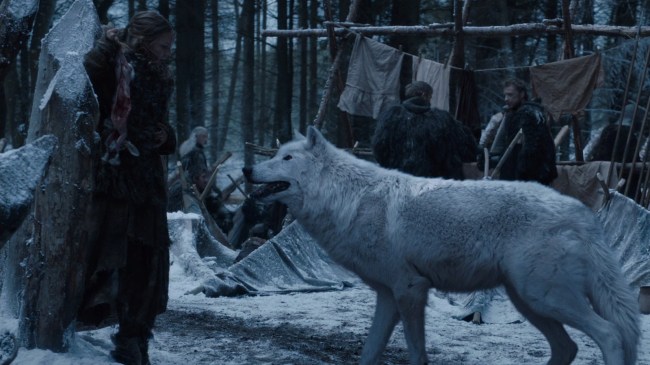HBO
Experts believe the planet was once home to more than five billion species that eventually went extinct—around 99% of the total number that have existed at some point in time. That includes the dire wolf, which died off in the wake of the Ice Age but has made its grand return courtesy of the scientists who may not be stopping there.
You don’t need to possess an exceptional level of media literacy to know Jurassic Park is a cautionary tale about the potential perils of playing God, and (as Jeff Goldblum’s character memorably states) being so preoccupied with whether or not you could bring dinosaurs back from the dead that no one stopped to think if they should.
As a result, it was hard not to react with both skepticism and intrigue when a CIA-funded company called Colossal Biosciences made waves a few years ago by announcing it was planning to bring the woolly mammoth back from extinction with the help of the gene-editing technology at its disposal.
Colossal seems confident it can achieve that goal before the end of the current decade (another company in Australia made a meatball out of woolly mammoth meat in 2023 but didn’t let anyone eat it), and it showed off the progress it’s made last month with the help of the genetically-modified “woolly mice” they created to showcase what they’re capable of.
According to Time, that’s not the only extinct animal Colossal has set its sights on, and things have taken a pretty wild turn after it successfully resurrected the dire wolf, which hasn’t roamed the planet for more than 10,000 years.
Most people are probably familiar with dire wolves thanks to the role they played while serving as loyal companions to various members of the Stark family on Game of Thrones. That may have been a fantasy series, but unlike the dragons that were heavily featured, the dire wolf was a very real animal that roamed North and South America before falling victim to the mass extinction event that occurred during the Late Pleistocene era.
Based on the many dire wolf fossils that have been uncovered, the last one died more than 10,000 years ago, and some of those remains were used to extract the genetic material that allowed the folks at Colossal to edit the genes of a grey wolf in order to produce Romulus and Remus, the dire wolves that were born to a surrogate on October 1, 2024 (a third, dubbed Khaleesi, was brought into the world at the end of January).
Colossal’s scientists have been raising and observing the wolves that currently roam a 2,000-acre preserve in an undisclosed location in the United States (where they will remain for their entire lives). They’re expected to grow up to six feet and weigh in at around 150 pounds and exhibit the signature traits of a wild wolf as opposed to a domesticated canine.
It seems like it’s only a matter of time until more extinct species are welcomed into the fold, so here’s to hoping things go a bit more smoothly than they did in Jurassic Park.
Content shared from brobible.com.

